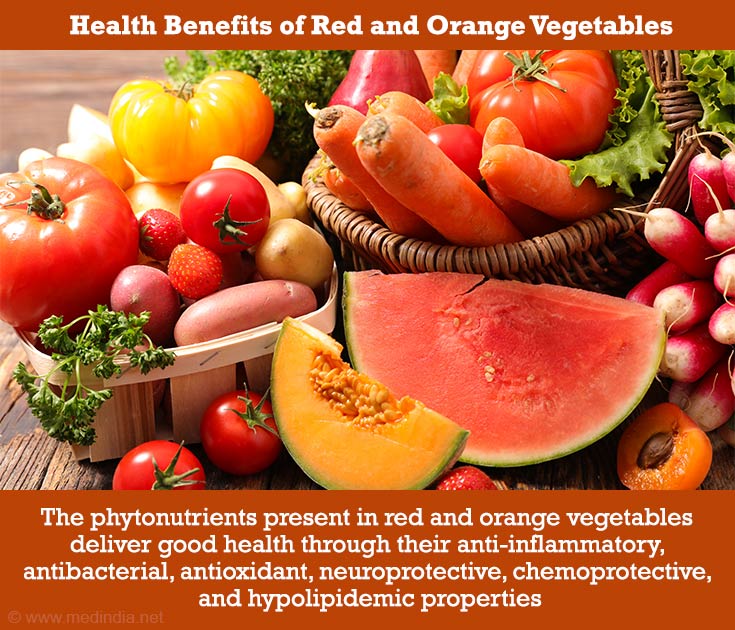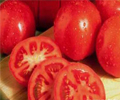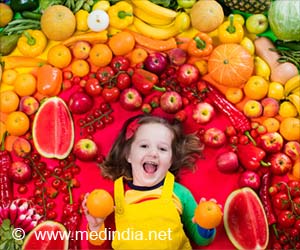- Relationship between color and antioxidant capacity of fruits and vegetables - (https://www.sciencedirect.com/science/article/pii/S2665927119300097)
- Should We 'Eat a Rainbow'? An Umbrella Review of the Health Effects of Colorful Bioactive Pigments in Fruits and Vegetables - (https://www.mdpi.com/1420-3049/27/13/4061)
- Health Benefits of Fruits and Vegetables - (https://www.sciencedirect.com/science/article/pii/S2161831322010262?via%3Dihub)
- Health attributes of yellow/orange vegetables - (https://www.researchgate.net/profile/Carolyn-Lister-2/publication/268516168_Health_attributes_of_yelloworange_vegetables/links/546e81c80cf2b5fc17607883/Health-attributes-of-yellow-orange-vegetables.pdf)
- Nutritional Quality of Colored Vegetables: A review - (https://nutraceuticals.imedpub.com/articles/nutritional-quality-of-colored-vegetables-a-review.pdf)
- A Review of the Science of Colorful, Plant-Based Food and Practical Strategies for "Eating the Rainbow" - (https://www.hindawi.com/journals/jnme/2019/2125070/)
- Novel Approaches for the Recovery of Natural Pigments with Potential Health Effects - (https://pubmed.ncbi.nlm.nih.gov/35040324/)
- Antioxidant-rich natural fruit and vegetable products and human health - (https://www.tandfonline.com/doi/full/10.1080/10942912.2020.1866597)
What are Red and Orange Vegetables?
The color of the vegetables is associated with the presence of essential nutrients and their health benefits. Carotenoids, a widely distributed class of pigments, are responsible for producing the natural red and orange colors in vegetables. Lycopene, beta-cryptoxanthin, capsorubin, and capsanthin are the bioactive pigments that paint foods red. Orange foods are produced by compounds called beta-carotene. Several studies have uncovered ties between the consumption of red and orange vegetables and health benefits.
The importance of consuming fruits and vegetables of varied colors is to obtain various health benefits attributed to phytopigments and several other essential nutrients. Orange and red vegetable benefits have been observed in heart health, eye health, diabetes, dyslipidemia, skin health, and many more. The phytonutrients are the key players in the potential health benefits observed(1✔ ✔Trusted Source
Relationship between color and antioxidant capacity of fruits and vegetables
Go to source, 2✔ ✔Trusted Source
Should We 'Eat a Rainbow'? An Umbrella Review of the Health Effects of Colorful Bioactive Pigments in Fruits and Vegetables
Go to source).
List of Red and Orange Vegetables
Below are red and orange colored vegetables that can be included to create a colorful diet.
- Carrot
- Pumpkin
- Butternut squash
- Cantaloupe
- Sweet potato
- Red capsicum
- Red amaranth leaves
- Red beetroot
- Red cabbage
- Tomatoes(3✔ ✔Trusted Source
Health Benefits of Fruits and Vegetables
Go to source)
Nutritional Profile of Red and Orange Vegetables
The nutritional profile of different red and orange vegetables is described in the table below(4✔ ✔Trusted Source
Health attributes of yellow/orange vegetables
Go to source), (5✔ ✔Trusted Source
Nutritional Quality of Colored Vegetables: A review
Go to source) -
| FOODS | NUTRIENTS |
| Tomatoes | Rich in beta-carotene, lycopene, chlorogenic acid, naringenin, vitamin C, and potassium. |
| Beetroot | High in fiber, magnesium, iron, vitamin C, vitamin B9, and folate. |
| Red cabbage | One cup of red cabbage has been found to contain 85% vitamin C, 20% vitamin A, and 42% vitamin K. |
| Red potatoes | Contains carotenoids, flavonoids, and caffeic acid. |
| Carrots | Sufficient amounts of vitamin A, beta-carotene, potassium, and antioxidants. |
| Pumpkin | Excellent source of provitamin A, carotenoids, fiber, vitamin C, and potassium. |
| Red Capsicum | An exceptional source of vitamin C, phytochemicals like alpha- and beta-carotene, lycopene, lutein, zeaxanthin, capsaicin, and flavonoids. |
Health Benefits of Red and Orange Vegetables
Good health can be obtained by including an array of nutrients in sufficient amounts; hence, choosing foods with different phytonutrient pigments is a wise option.
The phytonutrients present in red and orange vegetables deliver good health through their anti-inflammatory, antifungal, antibacterial, antiallergic, antioxidant, neuroprotective, chemoprotective, hypolipidemic, and hypotensive properties(2✔ ✔Trusted Source
Should We 'Eat a Rainbow'? An Umbrella Review of the Health Effects of Colorful Bioactive Pigments in Fruits and Vegetables
Go to source).
- Red-tinted foods act functionally by reducing inflammation and regulating the immune response. This may be achieved by the presence of Lycopene, fisetin, astaxanthin, and ascorbic acid in these foods.
- Studies have found red foods and/or their constituents help reduce infections and bolster immune status.
- Tomatoes have been studied to be helpful in managing metabolic syndrome by potentially improving endothelial dysfunction and inflammation status.
- Red and orange foods also assist in regulating cholesterol levels. Tomatoes have been found to help increase HDL cholesterol and decrease triglycerides and total cholesterol levels(6✔ ✔Trusted Source
A Review of the Science of Colorful, Plant-Based Food and Practical Strategies for "Eating the Rainbow"
Go to source).

- Carotenoids found in red and orange vegetables help improve
cardiovascular health by reducing the oxidation of LDL cholesterol. It also helps in reducing inflammation, thrombosis, and dyslipidemia. Epidemiological studies have shown that high levels of carotenoids like beta-carotene lower the risk of metabolic and cardiovascular diseases. - These foods may also aid in cancer prevention by reducing oxidative stress. The fiber and antioxidants present in these foods exhibit anti-carcinogenic effects. Consuming red and orange vegetables is linked with a lowered risk of mouth, esophageal, lung, colon, and stomach cancer.
- The vitamin C present in orange and red foods benefits eye health, diabetes, and cardiovascular health. They also protect against skin infections, and gastrointestinal disorders(7✔ ✔Trusted Source
Novel Approaches for the Recovery of Natural Pigments with Potential Health Effects
Go to source, 8✔ ✔Trusted Source
Antioxidant-rich natural fruit and vegetable products and human health
Go to source).
Recipes
Red and orange vegetables act as versatile ingredients and can be used to make several appetizing recipes.
Cantaloupe Strawberry Salad
Ingredients
- Cantaloupe scooped into balls - 1
- Strawberries, chopped - 2 cups
- Lime - 1
- Sugar - 3 tsp
- Mint leaves, chopped - ¼ cup
Method of Preparation
- Combine the chopped strawberries and scooped cantaloupe together in a mixing bowl.
- Squeeze juice from one lime and use the zest of the same.
- Mix lime juice, lime zest, mint leaves, and sugar in a separate bowl and mix well until the sugar dissolves.
- Leave it in the refrigerator for an hour, to allow the flavor to develop, and serve it cold.
Romesco Sauce
Ingredients
- Red bell peppers - 2
- Tomatoes - 6
- Garlic - 4 cloves
- Almonds, roasted - ¾ cup
- Smoked paprika - ½ tsp
- Sherry vinegar - 1 tbsp
- Olive oil - 1 tbsp
- Salt - ¾ tsp
Method of Preparation
- On an aluminium foil-lined baking sheet, place the garlic cloves and slices of red peppers. Broil in the oven for 5 to 8 minutes until the vegetables have softened.
- Roast the tomatoes on fire and let them cool.
- In a blender, add the broiled vegetables, tomatoes, almonds, vinegar, smoked paprika, olive oil, and salt. Blend to a smooth consistency. If a thicker consistency is desired, more nuts can be added.
- The sauce is ready for use and can be refrigerated for up to 2 weeks.
- This versatile sauce can be enjoyed with baked fish, grilled vegetables, roasted broccoli, and sauteed shrimp.
Carrot Paratha
Ingredients
- Carrots, grated - 1.5 cups
- Whole wheat flour - 1.5 cups
- Onion, chopped - 1/3 cup
- Coriander leaves, chopped - 1/3 cup
- Ginger, chopped - 1 tsp
- Curry leaves - a few
- Green chilli - 1
- Salt - ¼ tsp
- Water - as required
- Oil - 1 tbsp
Method of Preparation
- In a mixing bowl, add whole wheat flour and salt and mix well.
- Add all the remaining dry ingredients and mix well with your fingertips.
- Pour water to adjust consistency and knead to a smooth dough.
- Drizzle oil over the dough, cover it and let it rest for 15 minutes.
- Roll the dough and cook both sides on a tawa.
- Serve with dhal or sabji ofyour choice.










